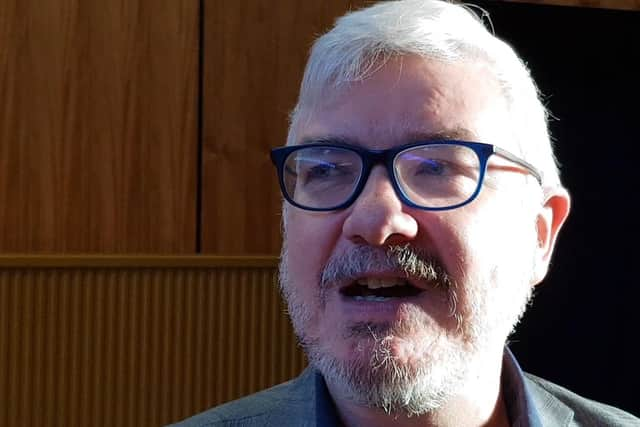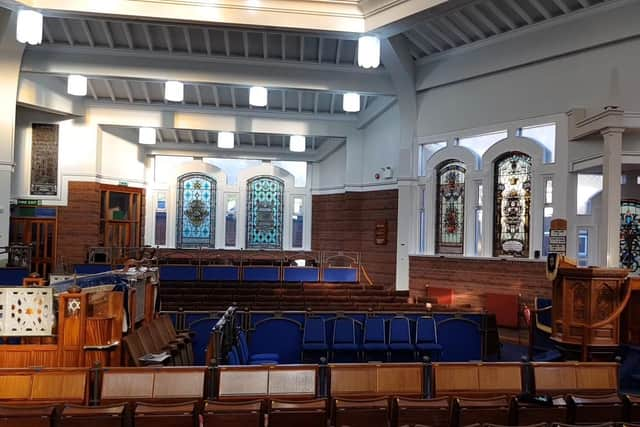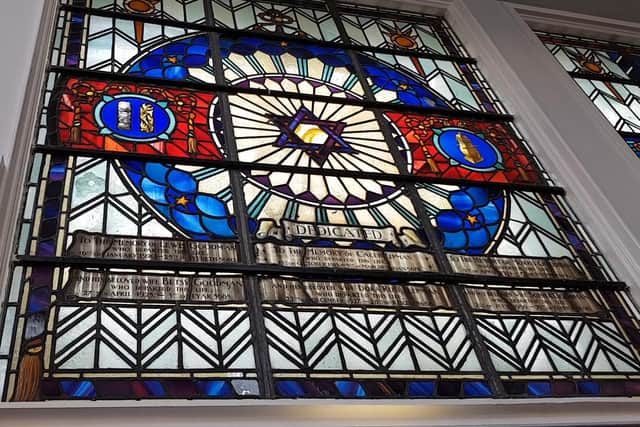Why does a Leeds Jewish congregation do shots of vodka after a Friday night service?
and live on Freeview channel 276
These are probably the last words expected out of the mouth of a Jewish rabbi but epitomise the reason behind the Yorkshire Evening Post’s special series on Faith in Leeds.
In this latest instalment, Emma Ryan visits both an orthodox and reform Jewish synagogue.
Advertisement
Hide AdAdvertisement
Hide AdJewish people, over hundreds of years, have been among the most persecuted in the world. Even today, the realms of politics and religion have become increasingly intermingled and, as we look at what is now one of the city’s minority faiths - it throws up some surprises.


Oldest religion?
It is up there with one of the most talked about religions and is one of the oldest.
With origins that head back towards the 11th century, the Middle and late Bronze ages, the history and customs of it are steep and deep-rooted.
In short - Jewish people follow the principle that there is only one God and to serve that God requires deeds and acts of commandment that adhere to a strict belief system.


Advertisement
Hide AdAdvertisement
Hide AdIn reality, it is much more complex than this because, bringing it back to 2019, there are even divisions within the practice itself.
Different forms
Orthadox Jewish is the most traditional form and considered the more strict. That can be taken further with the strand of ultra orthadox. At the opposite end of the spectrum is reform Judaism which abandons some of the orthadox customs in a bid to make the religion adaptable to fit with society, politics and culture in modern day life.
Leading the way with that is the current Rabbi at the Sinai Synagogue in Roundhay.


Paul Strasko has been in post for five months.
He is an American and was ordained at a synagogue in Germany which had previously been closed down by the Nazis.
Advertisement
Hide AdAdvertisement
Hide AdHis approach differs from some of the more traditional teachings, in that he promotes gender equality and is more open to outsiders.
Some services require ten Jewish men, aged 13 and over to be present in order to go ahead and they have a physical line of division between male and female members of the congregation.
At the Sinai Synagogue there is a looser requirement of ten Jewish people aged 13 and over.
Equality
He tells the Yorkshire Evening Post: “Men and women have different roles within the service and help the rabbi during the service. We have had a female rabbi in the congregation, previously our interim rabbi was a woman and we have had female students.
Advertisement
Hide AdAdvertisement
Hide Ad“I take it seriously and try to be as gender blind as possible but I have to be reminded that there are still things people are not comfortable with a man or woman doing.
“People have different levels of comfort with some things but generally men and women are equal with what we do.”
Some of Jewish faiths will pray three times a day, for the Reform followers that can be interpreted as they see fit. Rabbi Strasko says he is comfortable attending an Orthadox synagogue but adds that there may well be repercussions for an orthadox rabbi to attend a Reform place of worship.
However, there are some universal rules. There is a Friday night service and Saturday is Shabbat, a day of rest, and there is a Saturday morning service.
Vodka
Advertisement
Hide AdAdvertisement
Hide AdBut, perhaps breaking the rules again, Rabbi Strasko leads the congregation in doing a shot of vodka after the Friday night before getting his guitar out and playing a few songs.
He explains: “It creates a community with each other, a togetherness and a joy of eating and drinking together.”
While the congregation experiences a togetherness, and there is a drive to make Judaism more modern, that is not always a two way street.
As surprising as it is to learn about the vodka shots, what is also stark is the level of security surrounding both the synagogues we visited.
Security threat
Advertisement
Hide AdAdvertisement
Hide AdGated entrances, CCTV, intercom systems, bars, locks and latches are present at both. Service times and events are not published readily on websites.
It creates a perception that Jewish people want to be kept separate, to conduct services behind closed doors and not attract attention.
Rabbi Strasko explains: “The difference between fact and reality and how people perceive Jews is huge, add to that the anti-sematic ideas that have been there for longer than you can imagine. Especially in the last couple of decades there has been a massive rise in anti-sematism across the world - ideas and action.
“I have been yelled at in the street with my kippah, people drive past and yell ‘go back to Israel. Is that a threat? But the security is so that we never have to figure out what we should have done.
Advertisement
Hide AdAdvertisement
Hide Ad“For us in Great Britain there is not a threat for us to respond to. I never want to and want to have dealt with that in advance.
“I don’t feel like I am behind bars, it allows me to feel more free to do my job. The people of Yorkshire have a passion about being warm and welcoming and I think that is true.”
When asked how the Jewish faith sits in modern Leeds, Rabbi Strasko admits there is still a way to go.
“We are bad about talking about ourselves and there is an illusion people know all about it [the Jewish religion] but they don’t.”
Education
Advertisement
Hide AdAdvertisement
Hide AdWhen he does talks at schools or groups, he asks the question what percentage of the world’s population is Jewish. The average guess is 20 to 30 per cent but the actual answer is 0.2 per cent.
Leeds is the third biggest Jewish city in the UK, made up of around 10,000 people, with most residents living within one locality.
There have been Jews living in Leeds since at least the middle of the eighteenth century. Like Jewish communities throughout the UK, the Jewish population of Leeds increased throughout the nineteenth century as Jews fled Eastern Europe.
According to the Institute for Jewish Policy Research, many immigrants to Leeds were either self-employed or employers, others embodied a substantial supply of cheap labour, both for the tailoring enterprises and sweatshops. Jews who fled Eastern Europe were unskilled and the industry provided job opportunities, but conditions in the sweatshops led to a series of general strikes by Jewish workers in Leeds, and these events have coloured social attitudes among Leeds Jews up to the present.
Advertisement
Hide AdAdvertisement
Hide AdRabbi Strasko advocates school visits, visits to the Sinai and is open to answering the questions people are afraid to ask. He adds: “We need to do a much better job of communicating ourselves.
“One of the reasons that I love doing education is that I am hard to offend. I would rather the hard questions be asked.”